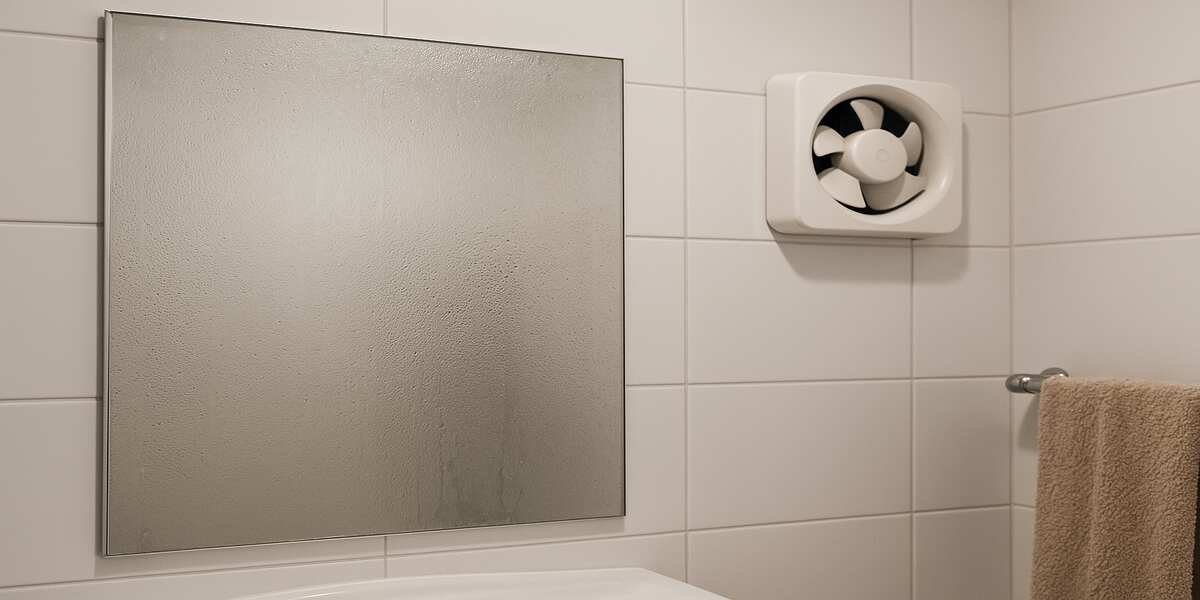Condensation in the Bathroom: Easy Tips to Prevent
Condensation in the bathroom begins with a misty mirror and will soon result in wet marks, flaking paint and persistent mould- all elements which are time-consuming and costly to eradicate, particularly before an end of lease inspection. To address moisture, you do not need a complete renovation. This blog will talk about simple daily practices to avoid condensation, making your bathroom dry, clean, and mould-free. When the problems get out of hand, then professional Bond Clean in Brisbane can be used to put the bathroom back to its original state.
1. Ventilate Like Pro
Your best protection against dampness is ventilation. The steam in bathrooms after a shower condensates on the surface and attracts mould. Always use your exhaust fan when in the shower and minimum of 15-20 minutes afterwards. No fan? Go to an open window and slightly leave the door ajar to facilitate air circulation. When using a fan, take note to clean your fan periodically to keep it effectively functioning- good ventilation would make it easier to stop the accumulation of moisture.
2. Wet Surface Apparatus Wipe
Steam condenses to tiles, mirrors and glass doors, and this moisture can permeate grout and edges when condensation is not promptly wiped off. A dust-free towel, after each shower, is the best solution; it removes mould and soap scum. This ritual makes your bathroom cleaner in the long run, and you scrub less later- good both for your routine and your relationship.
3. Keep Stuff Dry
Towels, bathmats and wet clothes have moisture in lengthy periods following each utilisation. Always hang towels with no folds on the rails and put mats in such a way that they can dry properly. Wash and turn these once a fortnight, and in case it can be done, expose them to the sun to dry. These shortcuts will keep the area dry and mould resistant- a trick that professional Bond Cleaning Biggera Waters always advises on.
4. Control Temperature of Water
The use of hot showers causes more steam, which enhances condensation. The reduction of the temperature of the water may be effected by reducing the time of the shower or shortening the time of showering to conserve water. Being finalised with a cold-water rinse in a short time on the walls and floors assists in cooling the areas, and the steam is not water-borne in a liquid form.
5. Get Cluttered Air
When air cannot easily flow and moisture cannot dry, clutter is an obstacle. Mount the skincare bottles, bath toys and so on away from surfaces. Install racks or cabinets in the walls and place the necessities in an orderly manner, which can enhance ventilation and ease of cleaning up. Drying is quicker on clear surfaces, and they remain mould-free.
6. Clean Often and Organise Early Warning Signs
The normal cleaning enables one to identify the mould, mildew or any leak before it gets worse. Look out for grout lines, ceilings and angles that are difficult to observe. Apply the mould-wrapping sprays or use natural cleaners such as vinegar. Look out for musty odours-they usually indicate latent moisture. In case this mould does not go away, hire bond cleaners to clean your bathroom professionally to a new level.
7. Repair Leaks Right Away
Leakages, as little as they may be, under the sinks, around the toilets, or the shower partitions, introduce moisture with time. Inspect and fix every week. Quick repairs eliminate the chances of damage and reduce expensive repairs that accompany inspections.
Wrapping Up
These basic daily regimens- ventilating, wiping, drying, decluttering, cleaning and leaks- will mean you have a dry, clean, mould-free bathroom throughout the year. When your lease is about to expire, professional bond cleaning services can give you the reassurance you need; with these tips, those condensation wars will be over before you even call on such services.
Also learn about 5 Cleaning Product Combinations You Must Avoid

